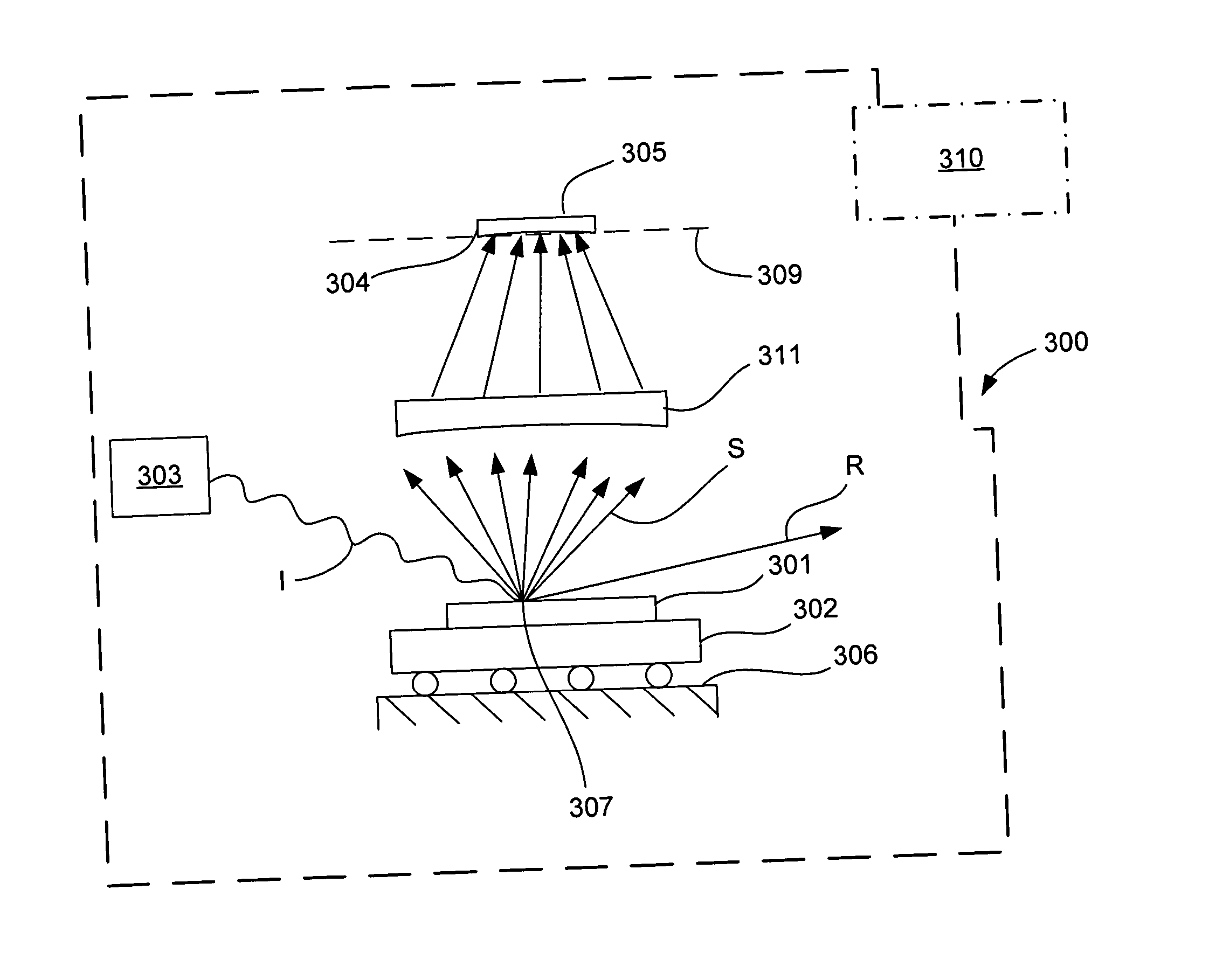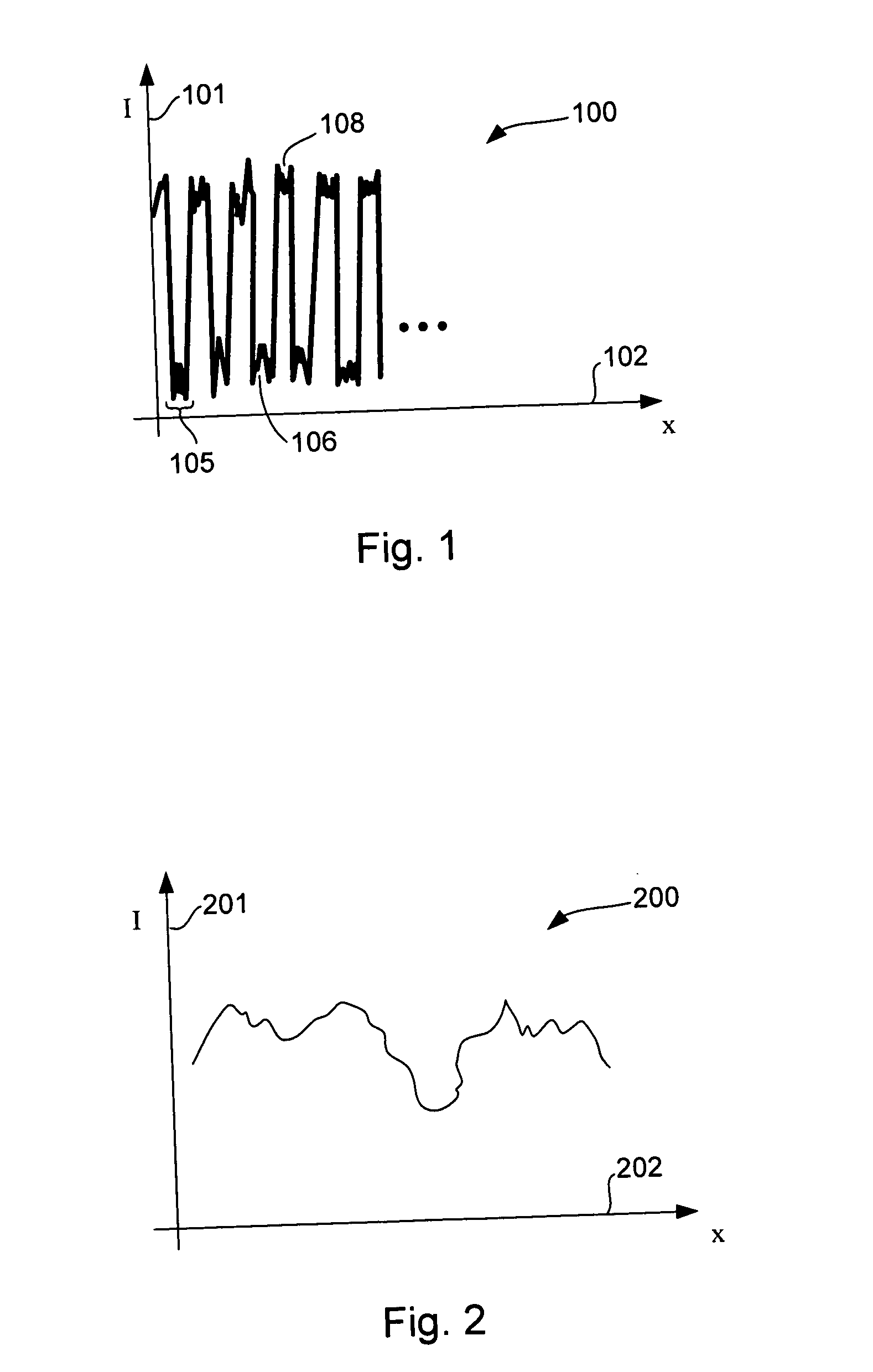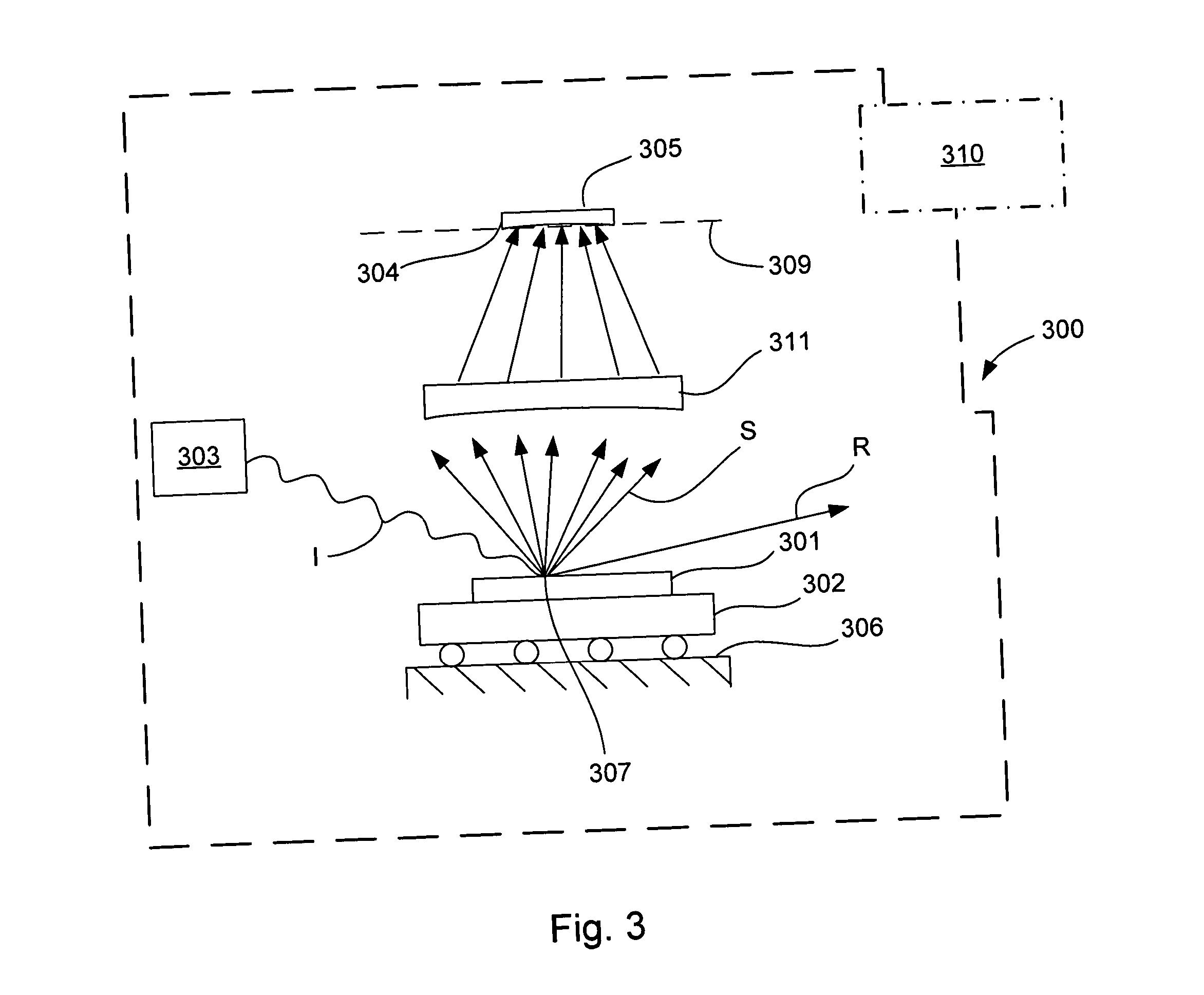System and method for conducting adaptive fourier filtering to detect defects in dense logic areas of an inspection surface
- Summary
- Abstract
- Description
- Claims
- Application Information
AI Technical Summary
Benefits of technology
Problems solved by technology
Method used
Image
Examples
Embodiment Construction
[0033] The present invention has been particularly shown and described with respect to certain embodiments and specific features thereof. The embodiments set forth herein below are to be taken as illustrative rather than limiting. It should be readily apparent to those of ordinary skill in the art that various changes and modifications in form and detail may be made without departing from the spirit and scope of the invention.
[0034] In general, adaptive filtering in accordance with the principles of the invention works as follows. A light beam is directed onto a target and scattered into a scattering pattern. The scattering pattern is collected by a photodetector array in a fourier plane to form an image of the pattern. The brightest pixels of the pattern are adaptively filtered out. And the remaining pixels are processed to detect defects. Because these brightest pixels change for each point on the inspection surface, there is a need for a highly adaptive filtering system that is ...
PUM
 Login to View More
Login to View More Abstract
Description
Claims
Application Information
 Login to View More
Login to View More - Generate Ideas
- Intellectual Property
- Life Sciences
- Materials
- Tech Scout
- Unparalleled Data Quality
- Higher Quality Content
- 60% Fewer Hallucinations
Browse by: Latest US Patents, China's latest patents, Technical Efficacy Thesaurus, Application Domain, Technology Topic, Popular Technical Reports.
© 2025 PatSnap. All rights reserved.Legal|Privacy policy|Modern Slavery Act Transparency Statement|Sitemap|About US| Contact US: help@patsnap.com



